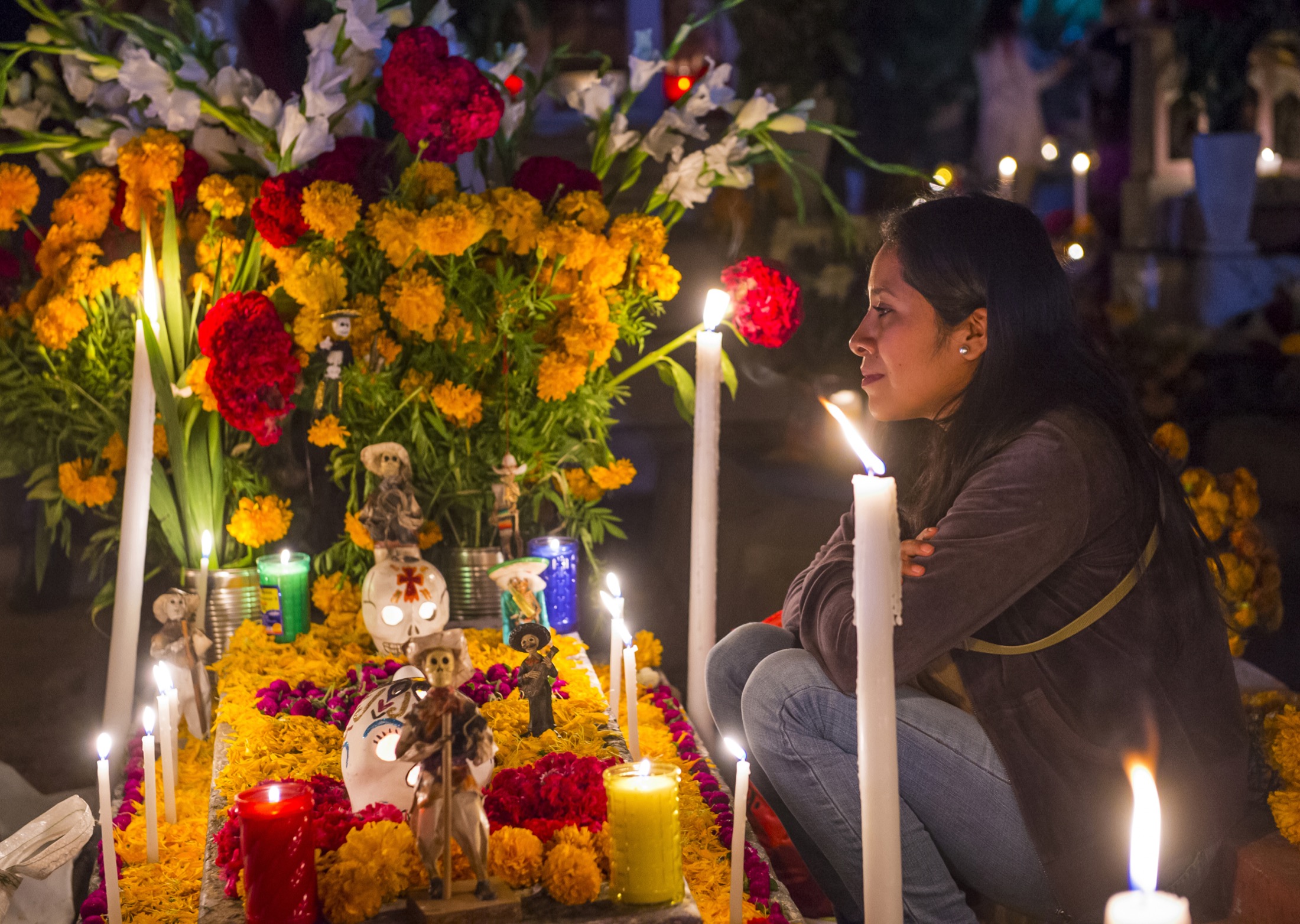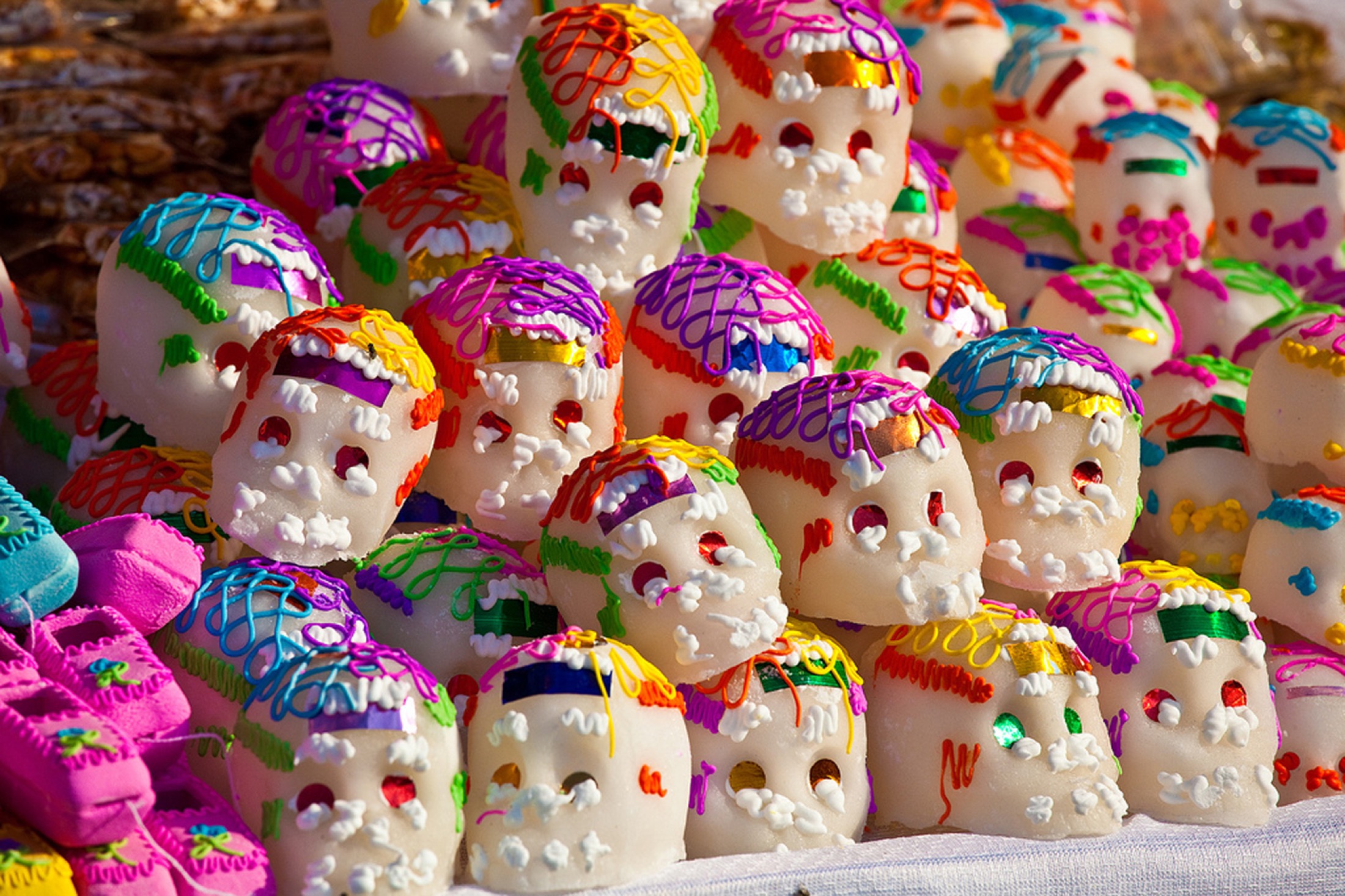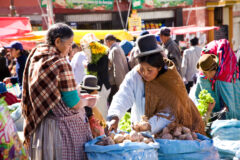Celebrate the Day of the Dead in Mexico

Mexico’s Día de Los Muertos is one of Latin America’s most famous and colourful celebrations. Discover the history, significance and traditions of this unique event, with advice on where and when to experience the Day of the Dead on a holiday to Mexico.
What is THE Day of The Dead?
The Day of The Dead is thought to have originated from the Aztecs in the 14th century. Although known for its bright, vibrant processions accompanied by food, drink and partying, this striking celebration has a poignant meaning in which indigenous people honour their deceased loved ones.
In Oaxaca, the celebrations take over this historic Mexican city for several days with the local population painting their faces, wearing costumes, dancing and parading through the streets. Altars are decorated with candles, buckets of colourful flowers, handmade art, bowls of fruit and traditional foods such as pan de muerto (a large Day of the Dead loaf).
When IS THE Day of The Dead CELEBRATED?
The belief is that the gates of heaven open at midnight on 31st October allowing the spirits of all deceased children (angelitos) to reunite with their families for 24 hours and then the spirits of the adults descend on 2nd November to enjoy the festivities prepared for them.
Where is THE Day of The Dead celebrated?
Day of the Dead is most famously a Mexican festival with the biggest celebrations in Oaxaca (pronounced ‘wah-ha-kah’) and Mexico City. Oaxaca’s celebrations date back to before Spanish colonial times. Mexico City, by contrast, did not celebrate the day until 2016 after the James Bond film Spectre depicted a parade through the city’s streets and officials took the opportunity to promote local tourism.
There are several other Latin American countries that celebrate Day of the Dead, including Ecuador, Guatemala and El Salvador, as well as among Latin populations in North America.

WHAT HAPPENS ON THE Day of The Dead?
Typically sweets and toys are left out for the angelitos while cigarettes and shots of mezcal are left out for the adult spirits. Another key Day of The Dead tradition is to tell stories of the deceased, celebrating their legacies, sharing loved ones’ memories with the younger generations.
We took an evening trip in Oaxaca to see the Xoxo graveyards. It was unlike anything I had ever seen before. Each grave was covered in vibrant Magnolia flowers and gifts including breads, sweets and even beer. A group of friends had gathered around one grave with a guitar to sing songs for someone they had lost. Seeing how they celebrate life and get together each year to remember their loved ones was such a moving experience (Heloise Buxton, Travel Expert).
While customs differ regionally, there are a few common rituals including:
Ofrendas
Ofrendas are individual altars, commemorating a loved one by gathering items that their family associate with them – from small portions of their favourite foods and drinks, to candles, flowers, calaveras (decorated sugar skulls), and toys for children who have passed away.
Marigolds
The Aztecs would adorn the celebration in cempasúchil (marigolds), with their significance being that their vibrancy and scent would help guide the souls that have passed towards the living to begin the celebration. Nowadays, this tradition is carried on by children who will get creative and make their own marigolds using pipe cleaners and tissue paper.
Sugar skulls/calaveras
These tasty creations are made using compressed sugar and water, and they’re often decorated in bright colours and personalised by the family with the name of their loved one. It’s another opportunity for the families to reflect upon the person that they are celebrating the life of.

There are many regional quirks too, from leaving pillows and mirrors out for the deceased as they pass through their town, to participating in ceremonial dances.
The event climaxes on the final day, 2nd November, when everyone takes to the cemetery to clean the decorated graves. Nowadays. the Carnivalesque remembrance is far from bizarre and grisly-sounding, but one of the world’s most universally familiar festivals with the iconic, beautifully illustrated skulls and vibrant flower wreath headdresses.
how can visitors experience day of the dead?
If you want to experience Day of the Dead first-hand, be sure to book ahead: as a national holiday and internationally renowned festival, hotels and flights get reserved several months in advance.
On Journey Latin America’s unique Day of The Dead holiday in Oaxaca, Mexico, you can watch and even join in with this unique festival. The tour includes three nights in Mexico City and five nights in Oaxaca, including visits to the ancient sites of Teotihuacan, Mitla and Monte Alban.
If you’d prefer to travel in a group, the Eagle group tour has a special Day of the Dead departure date arriving in Oaxaca just in time to experience the best of the festivities. The tour also takes in many of Mexico’s highlights, including Mayan and Aztec ruins, the beaches of the Riviera Maya and majestic colonial towns.
Alternatively, you can do a tailormade tour to Mexico and visit other highlights of this fascinating country such as the ruins of Chichén Itzá and Tulum, as well as colonial towns and Caribbean beaches. Begin planning the holiday of a lifetime with Journey Latin America; contact our travel experts for further information.
Tailor-made holidays
Flexible, custom-made holidays to Latin America created to match your exact requirements: our tailor-made itineraries are as unique as the clients for whom they are designed.
Design my tripPapagaio
Your edit for Latin American inspiration
Our exciting range of articles on Latin America explore everything from iconic destinations and lesser-known cultural gems to delicious traditional recipes. You’ll also find exclusive travel tips, first-hand client reviews and the chance to get your personal questions answered by our travel experts.
View Extraordinary Inspiration






































